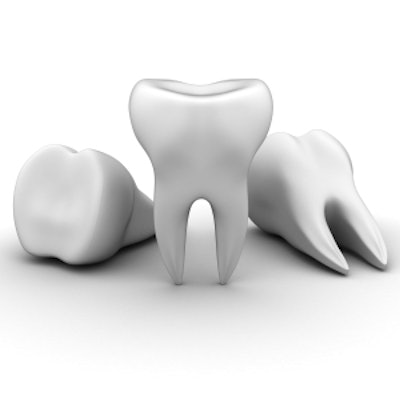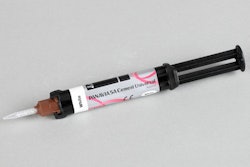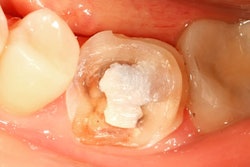
How well do flowable composites hold up for restorations of noncarious cervical lesions, and are there differences in performance between them? Researchers previously reported that two types of these materials had similar results after 30 months. They now share longer-term findings.
The study included patients who underwent simultaneous restorations of two noncarious cervical lesions with different flowable composite materials: one with a modified conventional matrix composition and the other with a novel matrix technology.
"Both flowable composites performed similarly, regardless of the mode of reduction of polymerization shrinkage," the study authors wrote (Dental Materials, November 6, 2017). Although, they noted a trend for slightly better performance of the novel material after 60 months.
The lead author was Fabian Cieplik, DMD, DDS, of the department of conservative dentistry and periodontology at University Medical Center Regensburg in Germany.
Sticking around?
Direct restoration of noncarious cervical lesions is necessary when tooth sensitivity occurs, pulp vitality is affected, or plaque retention is increased, according to the authors. Methacrylate-based composites are the gold standard for such procedures because of their superior aesthetic and mechanical properties compared with glass ionomer cements or hybrid ionomers.
Additionally, with a lower modulus of elasticity (the ratio of applied stress to the strain) compared with packable composites, flowable composites are reasonable options for restorations of these lesions, the authors wrote. However, there are no clinical studies on their long-term performance. Nonetheless, studies have found that the reduced viscosity of flowable composites leads to higher polymerization shrinkage, as well as more stress at the adhesive interface and concerns about sufficient marginal sealing, especially over the long term.
To that end, the researchers conducted a randomized clinical trial to evaluate the results of restorations of noncarious cervical lesions with two newer flowable composites: Filtek Supreme XTE Flow (3M ESPE) with a slightly modified conventional matrix composition, and N'Durance Dimer Flow (Septodont) with novel matrix technology.
The authors previously reported the 30-month results of this research. The current study adds 60-month results, which is helpful since follow-up periods longer than three years are considered useful for evaluating novel restorative materials, they wrote.
The study included 50 patients from one private dental practice in Germany. They each underwent restoration of noncarious cervical lesions in two premolars with the two composites performed by one experienced general dentist. Composite treatment assignment of each tooth was randomized. Clearfil Protect Bond (Kuraray) in self-etch mode was used as the adhesive.
“Both flowable composites performed similarly, regardless of the mode of reduction of polymeriziation shrinkage.”
At 30 months, 48 patients underwent evaluation, but the number of participants declined to 38 patients at 60 months. The restorations were evaluated by examiners who were blinded to the type of composite used.
At baseline, they judged all restorations clinically acceptable, which was defined as having a clinically acceptable score (1 through 3) in the FDI criterion of fracture of material and retention. At 30 months, the researchers found 96% of the restorations to be clinically successful, but the percentage dropped to 84.2% of the Filtek and 94.7% of the N'Durance restorations at 60 months.
At 30 months, they found FDI clinical ratings results similar between the groups. Although, at 60 months, surface luster was judged significantly better in the Filtek restorations (p = 0.02).
The examiners judged all restorations to have aesthetic anatomical form at baseline and 30 months, but one N'Durance restoration was clinically unsatisfactory and one Filtek clinically poor at 60 months.
The researchers found marginal adaptation and fracture of material and retention to be similar in both groups at all time points. However, at 60 months, they found six Filtek and two N'Durance restorations clinically unacceptable for fracture of material and retention, and three Filtek and two N'Durance clinically unacceptable for marginal adaptation.
Additionally, the examiners found clinically acceptable marginal staining on enamel and dentine margins for both materials at all time points, as well as clinically acceptable marginal adaptation, with no statistically significant differences between the materials. However, they found more marginal staining on enamel than on dentine margins at 30 and 60 months.
The authors noted that the tendency toward worse performance of enamel margins compared with dentine margins could be improved by selective enamel etching when using mild self-etch adhesives such as Clearfil Protect Bond, which was used in the study.
Keeping it real
The authors cautioned that when comparing these results to those of other studies, it is important to remember that the current study was performed under "real-life" conditions and not a university setting.
"All in all, these results are in accordance with the literature," they concluded.



















